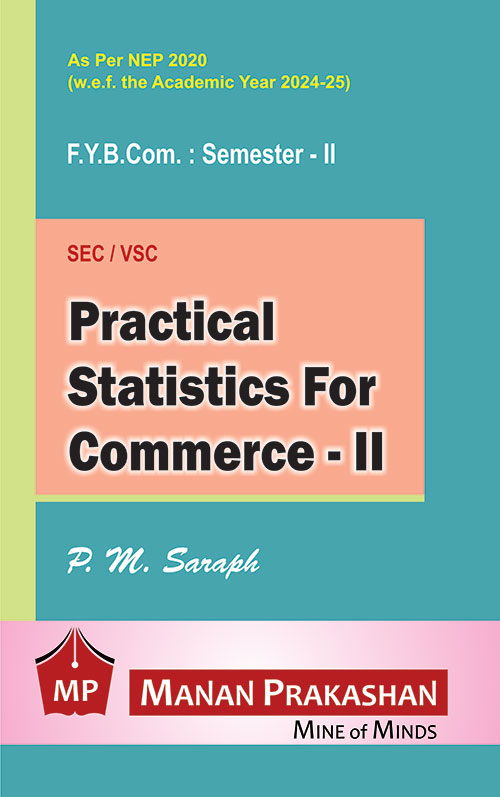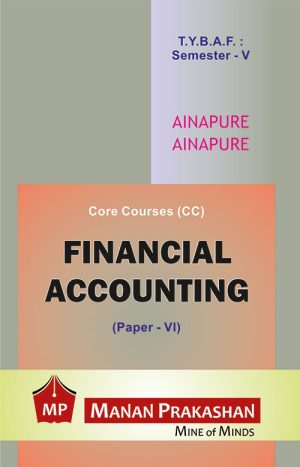Description
SEC / VSC
Practical Statistics For Commerce – II
FYBCOM Semester II
As Per NEP 2020
(w.e.f. the Academic Year 2024-25)
Syllabus
Module 1 : Correlation and Regression
1. Understanding the Scattered Nature of the Data. Concept of Fitting a Straight Line or a Curve (of Higher Degree) to the Data. Method of Least Squares (Only the idea is to be imparted. The proof etc. is not expected). Fitting a Straight Line using the Method of Least Squares.
♦ Practical Based on Plotting Scatter Diagram of the Data
♦ Practical Based on Fitting a Straight Line to the Data
2. Bivariate Distribution. The Concept of Correlation. Karl Pearson’s Coefficient of Correlation. Correlation does not Imply Causation. Qualitative Data and Spearman’s Rank Correlation Coefficient
♦ Practical Based on Identifying Univariate and Bivariate Data
♦ Practical Based on finding Karl Pearson’s Coefficient of Correlation
♦ Practical Based on Correlation versus Causation
♦ Practical Based on obtaining Spearman’s Rank Correlation Coefficient
3. Concept of Regression. Obtaining Regression Lines of Both Types (y on x and x on y), Obtaining Mean and Correlation Coefficient from Regression Lines
♦ Practical Based on finding Regression Line from the Data
♦ Practical Based on finding the Point of Intersection of the Regression Lines and verifying that It gives Means of x and y
♦ Practical Based on identifying the Type (x on y or y on x) Regression Lines and estimating the values of y for different values of x, or estimating values of x for different values of y
Students are encouraged to use excel to solve practical problems.
Module 2 : Time Series and Index Numbers
1. Concept and Components of Time Series. Estimation of Trend Using Moving Average Method and Least Squares Method (Only Linear Trend)
♦ Practical Based on Estimation of Trend Using Moving Average Method
2. Concept of Forecasting Using Least Squares Method.
♦ Practical Based on forecasting y value for a given value of x
♦ Practical Based on forecasting x value for a given value of y
3. Concept and Uses of Index Numbers. Simple and Composite Index Nos. (Unweighted, Weighted)
♦ Practical Based on Simple and Composite Index Numbers
4. Laspeyre’s Price Index No., Paasche’s Price Index No. Fisher’s Price Index No., Dorbish-Bowley’s Index Number, Marshall and Edgeworth Index Number
♦ Practical Based on Laspeyre’s Index Number
♦ Practical Based on Paasche’s Index Number
♦ Practical Based on Fisher’s Index Number
♦ Practical Based on Dorbish-Bowley’s Index Number
♦ Practical Based on Marshall and Edgeworth Index Number
5. Cost of Living Index No., Real Income
♦ Practical Based on Cost of Living Index Number
♦ Practical Based on Real Income
Students are encouraged to use excel to solve practical problems.






Reviews
There are no reviews yet.